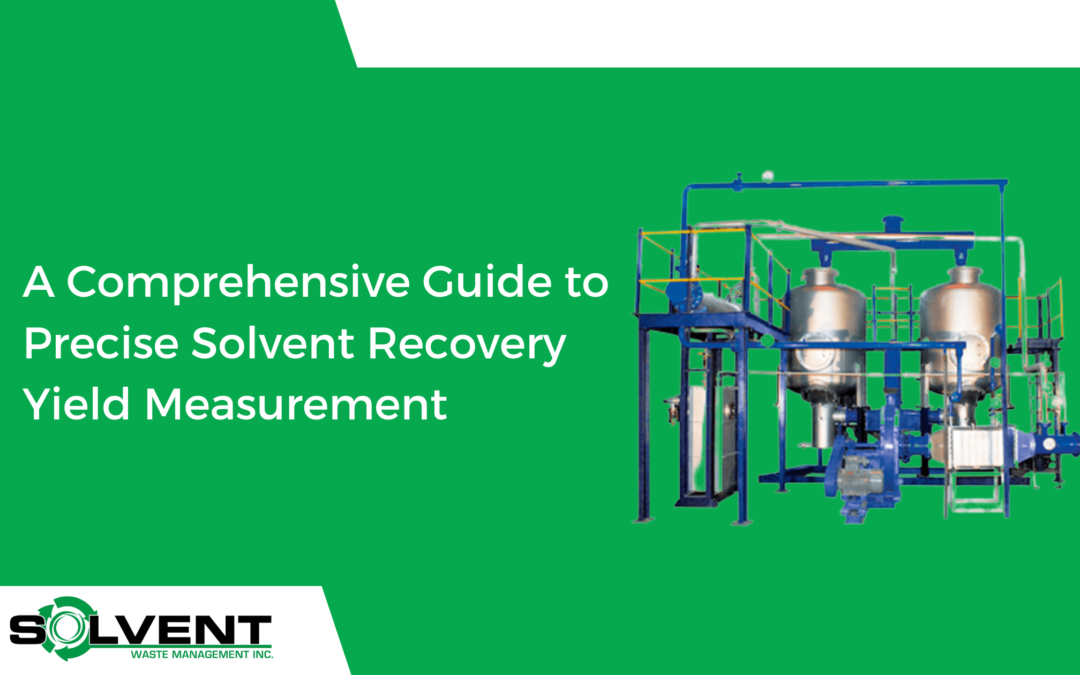Accurately measuring solvent recovery yield is crucial for industries relying on solvents for various processes, such as pharmaceuticals, petrochemicals, and manufacturing. Achieving high solvent recovery yields not only reduces environmental impact but also improves cost efficiency.
In this in-depth guide, we will explore essential techniques, tools, and tips to ensure precise solvent recovery measurements, enhancing your overall process efficiency.
How to Accurately Measure Solvent Recovery Yield
To accurately measure solvent recovery yield, you must follow systematic steps and utilize appropriate tools. Here are key methods to achieve precise measurements:
1. Understanding Solvent Recovery Yield
Before delving into measurement techniques, it’s essential to grasp the concept of solvent recovery yield. Solvent recovery yield represents the percentage of solvent recovered from a process compared to the initial amount used. It is calculated using the formula:
Solvent Recovery Yield (%) = (Recovered Solvent Volume / Initial Solvent Volume) * 100
2. Utilizing Mass Balance Method
The mass balance method involves weighing the recovered solvent to determine its mass. By comparing the mass of the recovered solvent to the initial mass used, you can calculate the solvent recovery yield accurately. This method is widely used in various industries due to its simplicity and reliability.
3. Employing Gas Chromatography
Gas chromatography is a powerful analytical technique that can precisely determine the composition of a vapor mixture, including solvents. By analyzing the concentration of the recovered solvent, you can calculate the solvent recovery yield with high accuracy.
4. Using Refractive Index Measurements
Refractive index measurements provide a quick and non-destructive way to assess solvent concentrations. By comparing the refractive index of the recovered solvent to that of the original solvent, you can estimate the solvent recovery yield effectively.
5. Leveraging Spectroscopy Techniques
Spectroscopy techniques, such as infrared (IR) and nuclear magnetic resonance (NMR) spectroscopy, can be employed to measure solvent concentrations accurately. These methods offer valuable insights into solvent recovery processes.
6. Integrating Automation and Advanced Software
Incorporating automation and advanced software solutions can streamline solvent recovery yield measurements. Automated systems can collect data continuously, reducing human errors and enhancing data accuracy.
7. Optimizing Distillation Processes
Distillation is a widely used method for solvent recovery. By optimizing distillation processes, such as adjusting temperature and pressure, you can increase the yield and efficiency of solvent recovery.
8. Maintaining Equipment and Instruments
Regular maintenance of equipment and instruments used in solvent recovery is vital to ensure accurate measurements. Regular calibration and servicing can prevent discrepancies in results and maintain measurement precision.
9. Conducting Reproducibility Studies
To validate the accuracy and consistency of your solvent recovery yield measurements, conduct reproducibility studies. Compare results from multiple trials to identify any variations and ensure the reliability of your measurements.
How to Accurately Measure Solvent Recovery Yield: FAQs
Q: What factors affect solvent recovery yield?
A: Several factors can influence solvent recovery yield, including the type of solvent used, the efficiency of the recovery process, the quality of equipment, and the handling of solvents.
Q: Why is accurate solvent recovery measurement important?
A: Accurate solvent recovery measurement is vital for cost optimization, process efficiency, and environmental compliance. It helps industries reduce solvent waste and enhance overall sustainability.
Q: Can gas chromatography detect all solvents?
A: Gas chromatography can detect most volatile solvents; however, certain non-volatile solvents may require alternative analytical methods.
Q: Is manual solvent recovery measurement reliable?
A: Manual solvent recovery measurement can be prone to human errors and may lack precision. Employing automated methods and instruments increases reliability.
Q: How does temperature affect solvent recovery?
A: Temperature plays a critical role in solvent recovery. Optimal temperature adjustments can significantly improve the efficiency of solvent recovery processes.
Q: Can I reuse recovered solvents indefinitely?
A: While recovered solvents can be reused multiple times, their effectiveness may decrease after several cycles. Regular quality checks are necessary to ensure the recycled solvents meet required standards.
Conclusion
Accurately measuring solvent recovery yield is essential for industries aiming to improve their environmental impact and cost-effectiveness. By understanding the various measurement techniques, leveraging advanced technology, and optimizing recovery processes, organizations can achieve higher solvent recovery yields.
The use of automation, advanced software, and continuous maintenance further enhances measurement precision. Embracing these practices will not only benefit businesses but also contribute to a sustainable future.

